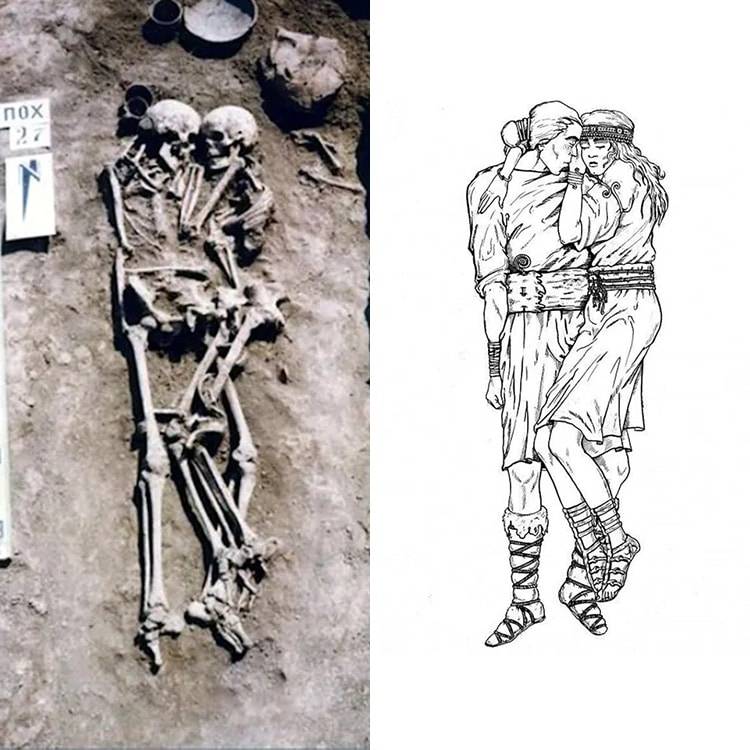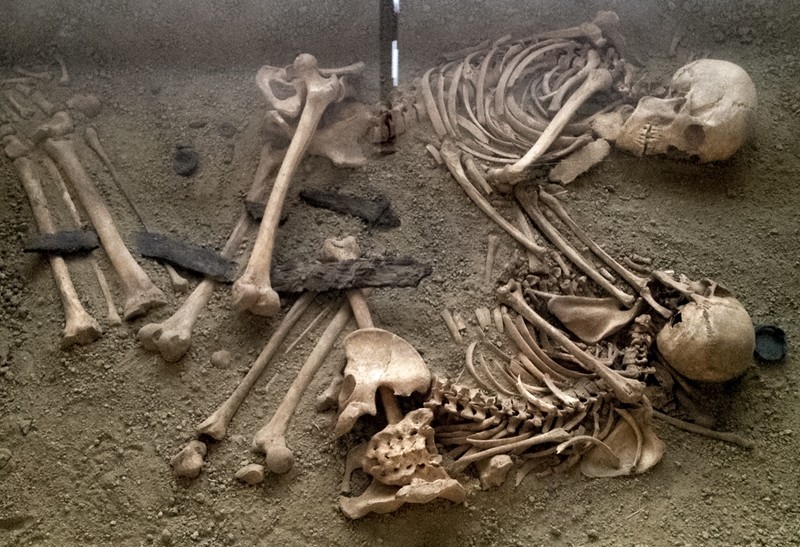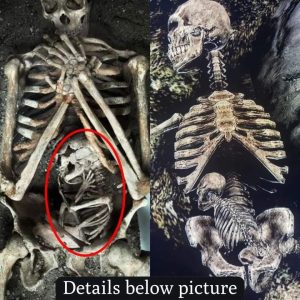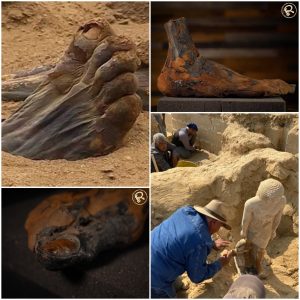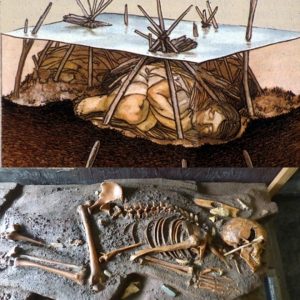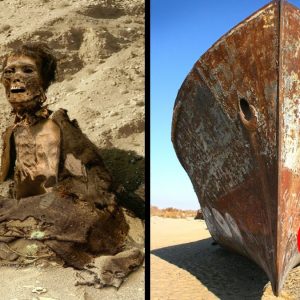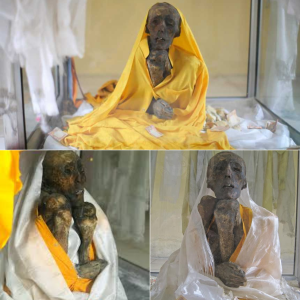In a remarkable archaeological discovery that has captivated scientists and historians alike, modern science has finally unraveled the mystery behind the 3,500-year-old remains of couples found embracing next to their children. This extraordinary find, which sheds light on ancient burial practices and familial relationships, has sparked widespread interest and speculation about the lives of these ancient individuals.
The discovery was made during excavations at an archaeological site in a remote region, where researchers stumbled upon the remarkably well-preserved remains of several couples buried together, their arms wrapped around each other in a tender embrace. What made this discovery particularly intriguing was the presence of children buried alongside the couples, suggesting a close-knit family unit even in death.
For centuries, the enigmatic posture of the embracing couples has puzzled archaeologists and historians, prompting numerous theories and speculations about the nature of their relationship and the circumstances surrounding their burial. Some hypothesized that the couples may have died simultaneously in a tragic event, while others suggested that the embrace was symbolic of a deep bond that transcended death.
However, thanks to advancements in modern scientific techniques, researchers have been able to shed new light on this ancient mystery. Through careful analysis of the skeletal remains and isotopic analysis of dental enamel, scientists have been able to glean valuable insights into the lives of these individuals and the circumstances of their deaths.
One prevailing theory suggests that the couples may have been members of a close-knit community or family group who were buried together as part of a communal burial ritual. The presence of children buried alongside the couples further supports this interpretation, indicating a strong emphasis on familial ties and communal bonds in ancient society.
Moreover, isotopic analysis of dental enamel has provided clues about the diet and geographic origins of the individuals, offering valuable information about their lifestyle and cultural practices. By examining the chemical composition of the enamel, scientists can determine what types of foods the individuals consumed and where they may have lived during their lifetime.
The discovery of the embracing couples has broader implications for our understanding of ancient burial practices and social dynamics. It offers a poignant glimpse into the emotional and familial bonds that existed in ancient societies, highlighting the importance of relationships and community ties even in the face of death.
As researchers continue to analyze the remains and artifacts associated with the embracing couples, it is hoped that further insights will be gained into their lives and the cultural context in which they lived. By piecing together the puzzle of the past, we can gain a deeper understanding of human history and the rich tapestry of experiences that have shaped our world.
In conclusion, the revelation of the mystery behind the embracing couples is a testament to the power of modern science to unravel the secrets of the past. Through interdisciplinary research and advanced scientific techniques, we can shed new light on ancient mysteries and gain a deeper appreciation for the complexities of human civilization.

